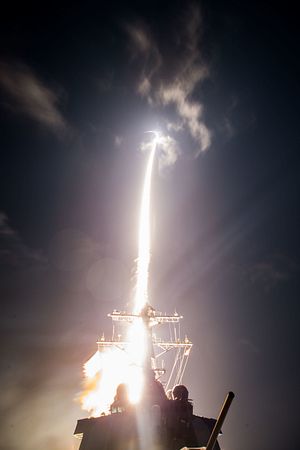A latest test of the Standard Missile-3 (SM-3) Block IIA missile interceptor failed on Wednesday, the U.S. Missile Defense Agency (MDA) announced in a press release.
The test, which occurred off the coast of Hawaii, took place late on Wednesday and tested the SM-3 Block IIA interceptor against a medium-range ballistic missile (MRBM) target.
“At approximately 7:20 p.m., Hawaii Standard Time, June 21 (1:20 a.m. Eastern Daylight Time, June 22), a medium-range ballistic target missile was launched from the Pacific Missile Range Facility at Kauai, Hawaii,” the MDA noted.
“The USS John Paul Jones (DDG 53) detected and tracked the target missile with its onboard AN/SPY-1 radar using the Aegis Baseline 9.C2 weapon system,” the statement added.
“Upon acquiring and tracking the target, the ship launched an SM-3 Block IIA guided missile, but the missile did not intercept the target.”
The U.S Missile Defense Agency considers missiles with ranges between 1,000 kilometers to 3,000 kilometers to be MRBMs. North Korea’s Pukkuksong-1 submarine-launched ballistic missile and Pukkuksong-2 solid-fuel missile both fall into this range.
Wednesday’s test is the first failed intercept test of the SM-3 Block IIA missile, which saw a successful intercept test against an MRBM-class target in February 2017. The system is designed to operate as part of the ship- and land-based Aegis Ballistic Missile Defense system.
The United States, Japan, and South Korea all operate Aegis-equipped warships and have been conducted trilateral exercises on ballistic missile defense against a fast-growing North Korean missile threat.
The three countries also share intelligence, surveillance, and reconnaissance related to North Korean ballistic missile activities and tests.
Wednesday’s failed test of the SM-3 Block IIA follows a successful test of the Ground-based Midcourse Defense system in late-May 2017.
That system was tested for the first time ever against an intercontinental-range ballistic missile (ICBM) class target.
May’s GMD test, despite proving a successful intercept, occurred under controlled conditions that might not be entirely realistic; for instance, the United States would be likely to face a longer-range ICBM from North Korea that would reach higher speeds.
In addition to its relevance in Asia against a North Korean ballistic missile threat, the SM-3 Block IIA missile will feature prominently as part of the European Phased Adaptive Approach missile defense system on land in Poland. That deployment is slated for 2018.
AT a recent testimony before the House Armed Services Committee, Vice Admiral James D. Syring, the director of the MDA, said that “In the 2018 timeframe, we will further enhance defensive coverage for NATO Europe against medium- and intermediate-range threats with the deployment of an Aegis Ashore site in Poland and the delivery of the SM-3 Block IIA and associated Aegis BMD weapon system upgrades for Aegis BMD ships and Aegis Ashore sites.”

































